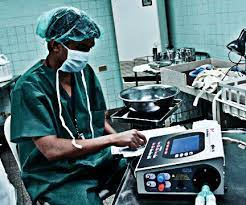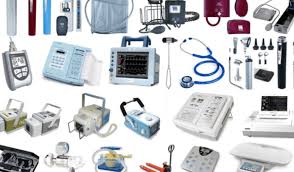In the realm of modern healthcare, biomedical equipment stands as the backbone of diagnostic and treatment processes. These sophisticated devices, ranging from MRI machines to patient monitors, play a pivotal role in ensuring accurate medical assessments and therapies. To maintain the integrity of healthcare services, it is imperative to understand the significance of biomedical equipment servicing.
The Vital Role of Biomedical Equipment
Biomedical equipment encompasses an extensive range of devices used in healthcare settings. These instruments are indispensable for doctors, nurses, and medical staff, aiding in patient diagnosis, patient monitoring of, and treatment. The precision and reliability of these devices directly impact patient outcomes, making their proper functioning a matter of life and death.
The Need for Professional Servicing
1. What Does Biomedical Equipment Servicing Entail?
Biomedical equipment servicing refers to the practice of maintaining, repairing, and calibrating these critical instruments to ensure their optimal performance. This job is not a task for the untrained, as biomedical equipment is complex and often involves high stakes.
2. Regular Maintenance and Calibration
Routine, maintenance procedures and calibration of biomedical equipment are essential to keep them accurate and reliable. Regular servicing prevents equipment breakdowns, ensuring consistent and precise results.
3. Ensuring Compliance with Regulations
Medical facilities are subject to strict regulations and standards. Proper servicing helps ensure compliance with these regulations, avoiding legal issues and penalties.
4. Specialized Technicians
Biomedical equipment repairs and servicing requires skilled technicians with in-depth knowledge of medical devices. They are equipped to troubleshoot, diagnose, and repair these devices effectively.
Reducing Downtime and Costs
5. Advantages of Outsourcing Biomedical Equipment Servicing
Outsourcing biomedical equipment servicing to specialized companies can significantly reduce downtime and operational costs for healthcare facilities. These service providers have the technical expertise,, experience, and resources to handle servicing efficiently.
6. Advantages of Outsourcing Biomedical Equipment Servicing
Outsourcing biomedical equipment servicing to specialized companies can significantly reduce downtime and operational costs for healthcare facilities. These service providers have the expertise, experience, and resources to handle servicing efficiently.
7. Reducing Downtime and Costs
Minimizing equipment downtime is crucial to maintaining the flow and availability of healthcare services. Professional servicing can help detect and address issues before they cause disruptions.
Medical Equipment
Medical equipment is the backbone of modern healthcare, contributing to accurate diagnosis, efficient treatment, and improved patient outcomes. As technology continues to advance, the landscape of medical equipment will evolve, ushering in new therapeutic possibilities and further enhancing the quality of healthcare services.
Understanding the Types of Medical Equipment
1. Diagnostic Equipment
a. Imaging Devices:
- X-ray Machines: Employed for imaging bones and detecting abnormalities.
- MRI (Magnetic Resonance Imaging): Provides detailed images of internal structures using magnetic fields.
- Ultrasound Machines: Utilizes sound waves for imaging internal organs.
b. Laboratory Equipment:
- Microscopes: Essential for analyzing cells, tissues, and blood samples.
- Blood Analyzers: Automate the analysis of blood components for diagnostics.
2. Life Support Equipment
a. Ventilators:
- Assist patients with breathing difficulties, providing respiratory support.
b. Defibrillators:
- Deliver controlled electric shocks to restore normal heart rhythms in emergencies.
c. Dialysis Machines:
- Vital for patients with kidney issues, filtering and purifying the blood.
3. Surgical Equipment
a. Surgical Instruments:
- Scalpels, forceps, and retractors facilitate precision in surgeries.
b. Anaesthesia Machines:
- Administer controlled doses of anesthetic gases during surgery.
4. Monitoring Equipment
a. Patient Monitors:
- Track vital signs like heart rate, blood pressure, and oxygen levels.
b. ECG Machines:
- Record and display the electrical activity of the heart.
Ensuring Quality and Safety
1. Regulatory Compliance
Medical equipment must adhere to stringent regulatory standards to ensure safety and efficacy. Regulatory bodies, such as the Medicines and Healthcare products Regulatory Agency (MHRA), play a crucial role in approving and monitoring medical devices.
2. Regular Maintenance and Calibration
To guarantee accurate performance, regular maintenance and calibration of medical equipment are essential. Healthcare facilities follow strict protocols to ensure equipment reliability, operation and patient safety.
Future Trends and Innovations
1. Nanotechnology in Medicine
The integration of nanotechnology holds promise for targeted drug delivery, imaging, and diagnostics, revolutionizing how medical conditions are treated and monitored.
2. Robotics in Surgery
Robot-assisted surgeries are becoming more prevalent, allowing for enhanced precision and control during complex surgical procedures.
3. Personalized Medicine
Advancements in genetics and molecular biology are paving the way for personalized medicine, tailoring treatments to individual patients based on their genetic makeup.
In conclusion, biomedical equipment servicing is a critical aspect of modern healthcare that should not be overlooked. The reliability and precision of medical equipment are directly linked to patient care, and professional servicing of biomedical engineers is essential to ensure their optimal performance. Compliance with regulations, regular maintenance, and the expertise of specialized technicians are fundamental in this process. Outsourcing servicing to experienced providers can further streamline operations, reducing downtime and costs. By prioritizing biomedical equipment servicing, healthcare facilities can continue to deliver high-quality care to their patients, upholding the standards of the medical profession.
FAQs
1. Why is biomedical equipment servicing important in healthcare?
Biomedical equipment servicing and management is crucial in healthcare as it ensures the accuracy and reliability of medical devices, directly impacting patient diagnosis and treatment outcomes.
2. What does biomedical equipment servicing entail?
Biomedical equipment servicing involves routine maintenance, calibration, and repair of medical devices to keep them in optimal working condition.
3. Can healthcare facilities outsource biomedical equipment servicing?
Yes, healthcare facilities can outsource biomedical equipment servicing to a team of specialized providers, which can help reduce downtime and operational costs.
4. How often should biomedical equipment be serviced?
The frequency of servicing depends on the type of equipment and its usage. Generally, routine servicing biomedical equipment should be conducted at regular intervals to maintain performance.
5. What are the consequences of neglecting biomedical equipment servicing?
Neglecting biomedical equipment servicing can lead to inaccurate test results, equipment breakdowns, compliance issues, and, of course in the worst case, compromise patient care and safety.

